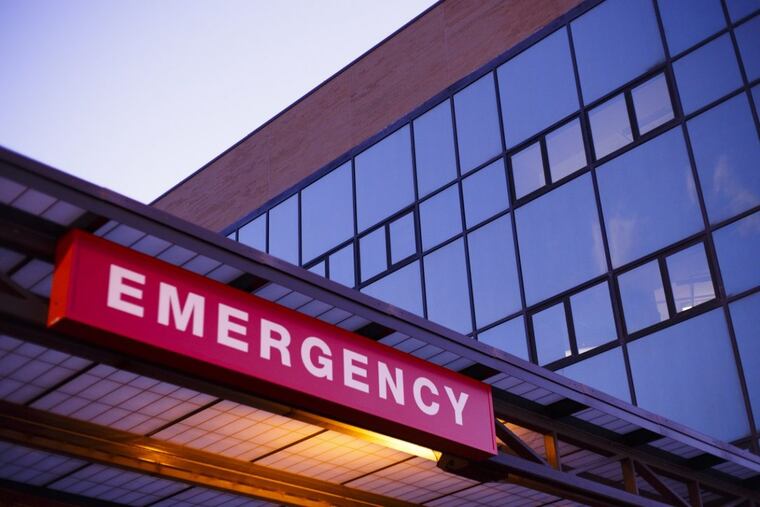Why a $13,000 ER bill in Kentucky is bad for patients everywhere
A new insurance policy in certain states rejects claims when a patient learns that symptoms, however frightening, were actually not emergencies. This suggests that patients need to assess their own medical condition before they see a doctor.

Last July, 27-year-old Brittany Cloyd went to the emergency room near her home in Kentucky, fearing that her fever and severe abdominal pain meant she had appendicitis, Vox news recently reported.
After a CT scan and ultrasound, doctors concluded it wasn't appendicitis, but ovarian cysts. Very painful, to be certain, but not imminently life-threatening, as appendicitis can be.
Cloyd went home with pain medication and instructions to see a gynecologist. Several weeks later, she received a $12,596 hospital bill and the news that her insurance company, Anthem, wouldn't cover it. Their reason: Cloyd's visit was not a true emergency and so was deemed an "inappropriate" visit to the ER.
She appealed the decision, and two months later, Anthem still said it wouldn't pay up. After the company got a call from a Vox reporter, however, it changed its mind.
"Anthem has made, and will continue to make, enhancements to our ER program to ensure more effective implementation of this program on behalf of consumers," the company wrote in a statement.
Anthem's "more effective implementation" is a new policy that rejects claims when a patient learns that symptoms, however frightening, were actually not emergencies. The policy has started in numerous states, including Georgia, Missouri, and Kentucky. More states, including New York, New Hampshire, Indiana, and Ohio, are to follow.
What this means is that patients are somehow supposed to assess their own medical condition — to self-diagnose their own problems — before they see a doctor.
Yes, the decision can be appealed, as Cloyd did. But as she learned, appeals aren't always successful. For her, the policy meant months of anxiety over a bill she could not afford.
Still, Anthem is raising an important question: How can we control health-care costs by reducing unnecessary emergency room visits?
Data from the U.S. Department of Health and Human Services are staggering. The number of ER visits shot up by 14.8 percent from 2006 to 2014 (compared with the overall population growth of 6.9 percent in that period). ER services are expensive, too, accounting for as much as 6 percent of our total health system costs.
As an emergency room physician, I see all kinds of symptoms that have the potential to be serious. A cough that is present for days? It could be pneumonia. A headache that feels different from any headache before? It could be meningitis. Without skilled diagnostic testing and medical evaluation in such cases, very ill and vulnerable people could die, or suffer unnecessary complications and pain, the results of waiting too long to get help.
The problem: Few safe solutions exist for diverting patients away from expensive ER care. There is no standard definition for "unnecessary" ER visits in the medical literature.
We need viable solutions for stemming the tide of non-urgent visits to the ER – solutions that do not fall on the backs of patients. We need these solutions both to control costs, and also to better serve patients, who may be stuck waiting for hours in overcrowded hospitals for help. At the same time, hospital staff trying to see too many people too quickly face the potential for burnout and, more seriously, making medical errors.
Options do exist. Patient education initiatives, such as handing out brochures about alternative care settings such as community clinics, can be effective. Community health workers and "patient navigators" can also help promote appropriate preventative and primary care utilization among Medicaid and uninsured patients who could avoid the need for emergency care if they had better ongoing attention for chronic illnesses.
A health system in Hampton Roads, Va., avoided $140 million in costs and prevented 1,200 ER return visits by using dedicated "life coaches" to work with uninsured and underinsured patients who were using the ER for routine care because they didn't know where else to go.
In Philadelphia, Penn Medicine has successfully used patient navigator programs (with help from internist Carmen Guerra) to better help hundreds of high-risk colon and breast cancer patients living in West and South Philadelphia. With more screening and clinic follow-up, patients may be less likely to need to go to the ER.
The decision to go to the emergency room is tense and filled with uncertainty. Chest pain could be a harbinger for a heart attack. Feeling short of breath may be the first symptom of a blood clot. The ER is treated as a Band-Aid for the wounds left by our health system, caring for people from all walks of life, regardless of their financial status. Under federal law, hospital emergency departments must stabilize everyone who comes in for care, regardless of ability to pay immediately – though as Cloyd's story shows, the care is not free.
Patients often don't freely elect to visit the ER unless they are in significant pain and fear what it might mean.
My heart sinks when I see people coming to our emergency department with anxious looks on their faces. They don't know whether they will go home in hours or days. I'm sure many also think about what the visit will cost; that anxiety is painful to watch and unlikely to result in a better outcome, either medically or financially.
As physicians, we are trained to take care of our patients and ensure that they remain safe and as healthy as possible, no matter their insurance status. Penalizing our patients with even the threat of a crushing, $13,000 bill for frightening abdominal pain is not the answer.
Erik J. Blutinger, M.D., M.Sc., is a resident in emergency medicine at the Hospital of the University of Pennsylvania.